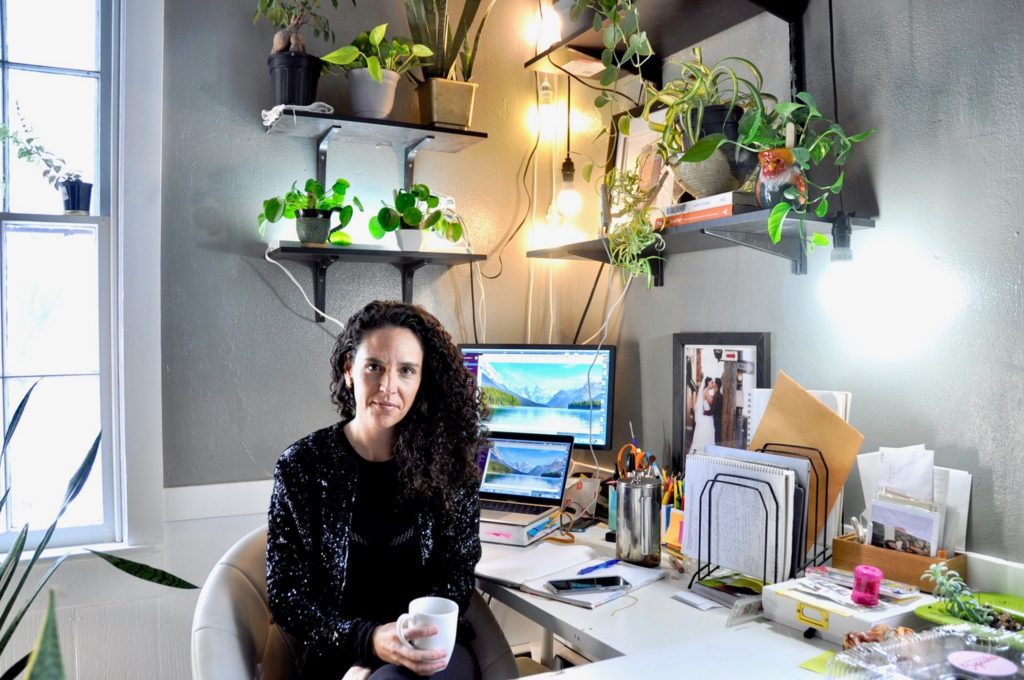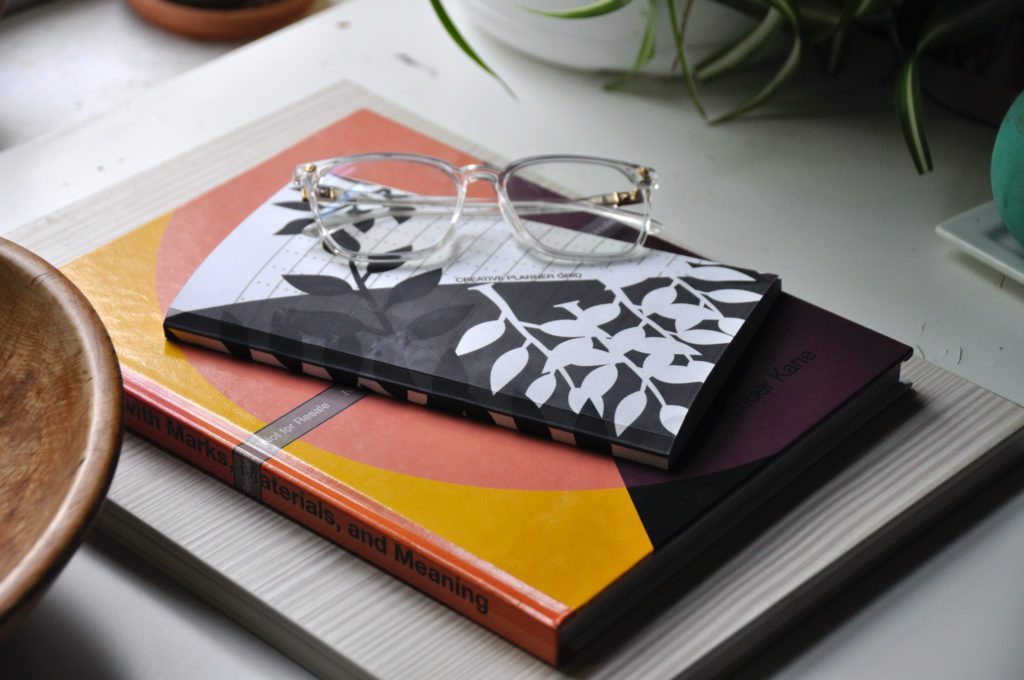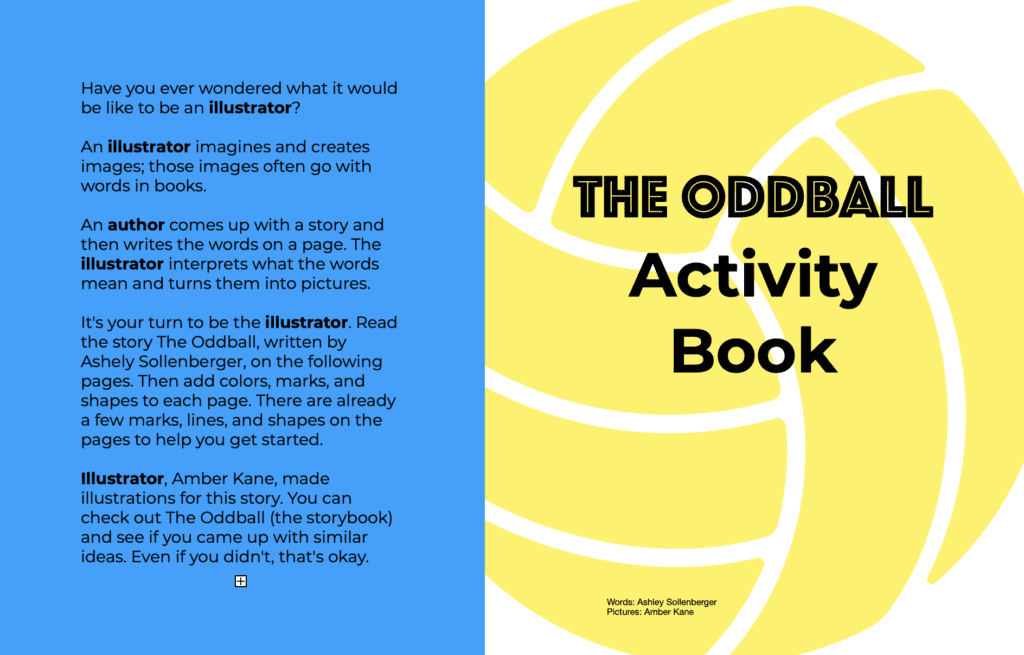How to Gain Momentum for Your Creative Work
German filmmaker Wim Wenders defined creativity as “obsessive problem-solving.”
When I read this definition of creativity, I felt so seen, you too?

My creative projects always border and sometimes trip over the edge of obsession. I get an idea, get started, which spurs 20 more ideas that I ALSO must DO RIGHT NOW!!
For some, this type of productivity is inspiring; for others, like someone who wants my attention when I’m in obsession mode, it’s frustrating and mind-boggling for a few other people.
Creativity is an act of making connections and combinations. I’ve learned that the more that I’m willing to make something, and then another thing that’s just a little bit different, and then another thing, the quicker that I can create, and the more ideas that I produce.
When you feel you’re out of creative ideas, you’re trying to take too big of a leap.
My students tend to have one idea, create it, and then feel like they need to have a new 100% different idea before they can make another thing. That’s not true, and in fact, it makes creative work much harder than it has to be.

The creative process should be a spiral, not a line.
Allow your ideas to spiral. If you check out the books that I’ve done recently, you should be able to spot some connections. The most basic link is that I’ve been creating books. I didn’t just make one book, a painting, and then a tapestry, ALL BOOKS.
Books that are planners
Books for children
Books with activities
Books about making pictures ( which also connects to me making picture books)
Another excellent example of this is if you check out the exhibit Epilogue that artists CJ Hendry completed.
She did hyper-realistic drawings of flowers.
Then she made scarves with prints of her flower drawings.
She made a coloring book with images of the flowers that she drew.
She made flower sculptures.
She hosted an exhibit and had flower petals falling from the ceiling.
She took the idea of flowers and allowed that to spur a host of creative projects.
Connections and combinations increase your rate of learning.
If you try to learn ten different things in a day or even a week, you’ll feel overwhelmed and probably won’t remember most of what you attempted to learn. (aka, you didn’t learn it)
When you focus, you’re learning by looking for connections and combinations; you’ll learn faster and remember what you learned because you’re applying it in multiple ways. You’re also learning in small increments instead of giant leaps.
Example:
- I had to learn how to lay out a book on my computer.
- I learned that skill and then applied it by making ten more books. The repetition makes the learning concrete.
- With each book, I learned new skills about creating images and new ways to photograph and combine drawing with digital photos.
- I wanted to make how to draw guides, so I learned how to use Procreate. Learning Procreate was a small leap because I had already made how to draw guides by hand.
- I learned how to make a word search with excel because I wanted to add more activities to my books. ( remember, I already knew how to make a book and how to make an activity, so I only needed to learn the formula for excel).
I could keep going with this list, but I think that you get the point. Learn a skill, then keep building on it to reinforce that skill while learning a new one.
That’s why I created an activity book to go with The Oddball. I don’t want kids to read The Oddball and move on; I want them to learn a skill, practice the skill, and acquire new skills. Having 70 pages of activities that relate to the story reinforces learning.

Paying attention to connections and combinations is my number one tip if you want to learn more and create more.
YOU DO NOT HAVE TO INVENT A NEW THING EVERY DAY.
It’s a disservice to yourself and the people you could be serving if you think you can only create if and when you have a BRILLIANT 100% original idea.
What is an original idea anyway? Let’s argue that anything that comes out of your brain is original because you’re an original human being.
PS: If you want help generating ideas, you need to check out Experiments with Marks, Materials, and Meaning. It’s packed full of prompts to help you get started and begin to uncover connections and combinations to fuel your creativity and skyrocket you’re learning curve.